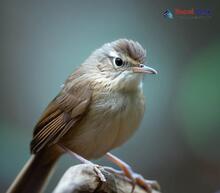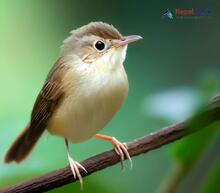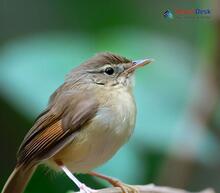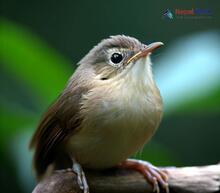The natural world is filled with a stunning array of biodiversity, and among the thousands of bird species in existence, the bird genus Hemitesia holds a unique place. This fascinating group known for its adaptation to specific ecological niches has captured the interest of bird enthusiasts and researchers alike. In this article, we'll uncover the captivating origin, evolution history, taxonomy, morphology, ecology, and presence of Hemitesia in Nepal.
Origin and Evolution History
The bird genus Hemitesia belongs to the Muscicapidae family, also known as Old World flycatchers. These birds have their origins in Eurasia and Africa. Over time, the Muscicapidae family has evolved to adapt to diverse habitats ranging from forests to grasslands. The Hemitesia genus evolved as a distinct group within this family, developing unique morphological and ecological adaptations that set them apart from other flycatchers.
Taxonomy
Within the Muscicapidae family, there are several recognized genera. Hemitesia is one such genus that includes a few species that differ markedly from each other in their appearance and habitat preferences. Although there is ongoing research to further refine our understanding of this genus's taxonomy, current classifications provide crucial insights into these captivating birds.
Morphology
Birds belonging to the Hemitesia genus possess several distinctive morphological features. These include a slender body shape adapted for agile movement through various environments and slightly curved bills designed for catching insects with ease. Their plumage ranges from subdued browns and grays to striking patterns with bold colors that serve as important signals during breeding seasons or territorial displays.
Ecology
Hemitesia species thrive in specific ecological niches found across their geographical range. They primarily inhabit areas with abundant vegetation such as woodlands, scrublands, and forests. Their preferred diet consists of insects, which they catch using their specialized bills and agile movements. The close relationship between Hemitesia's ecology and its surroundings makes these birds sensitive indicators of environmental changes and valuable subjects for ecological research.
Presence in Nepal
Nestled in the lap of the Himalayas, Nepal boasts an incredibly rich avian biodiversity. The country harbors numerous endemic and migratory bird species, including those from the Hemitesia genus. Nepal's diverse ecosystems, from subtropical lowlands to alpine regions, provide suitable habitats for various bird species. Hemitesia species can be observed in Nepal's protected areas such as national parks and conservation areas, where they contribute to the local ecology and attract birdwatchers eager to catch a glimpse of these unique creatures.
In conclusion, the bird genus Hemitesia stands out as an exceptional group in the captivating world of avian biodiversity. From their intriguing evolutionary history to their specialized ecological niches and presence in Nepal's rich ecosystems, these birds offer a fascinating window into the complexity of the natural world. As we further explore their taxonomy, morphology, and ecological roles, we can deepen our understanding of these awe-inspiring creatures and promote their conservation for future generations to appreciate.




